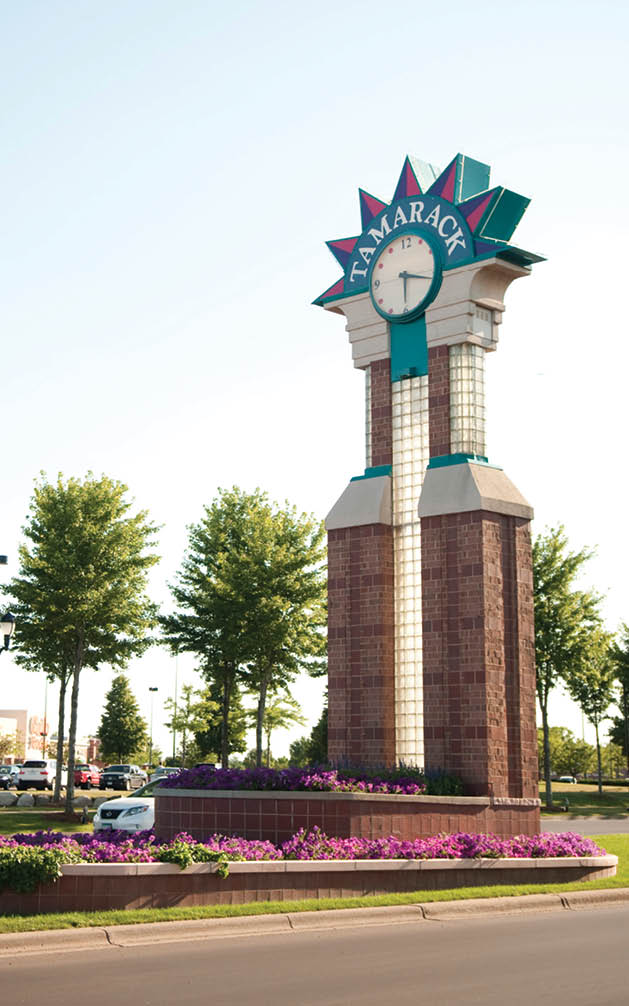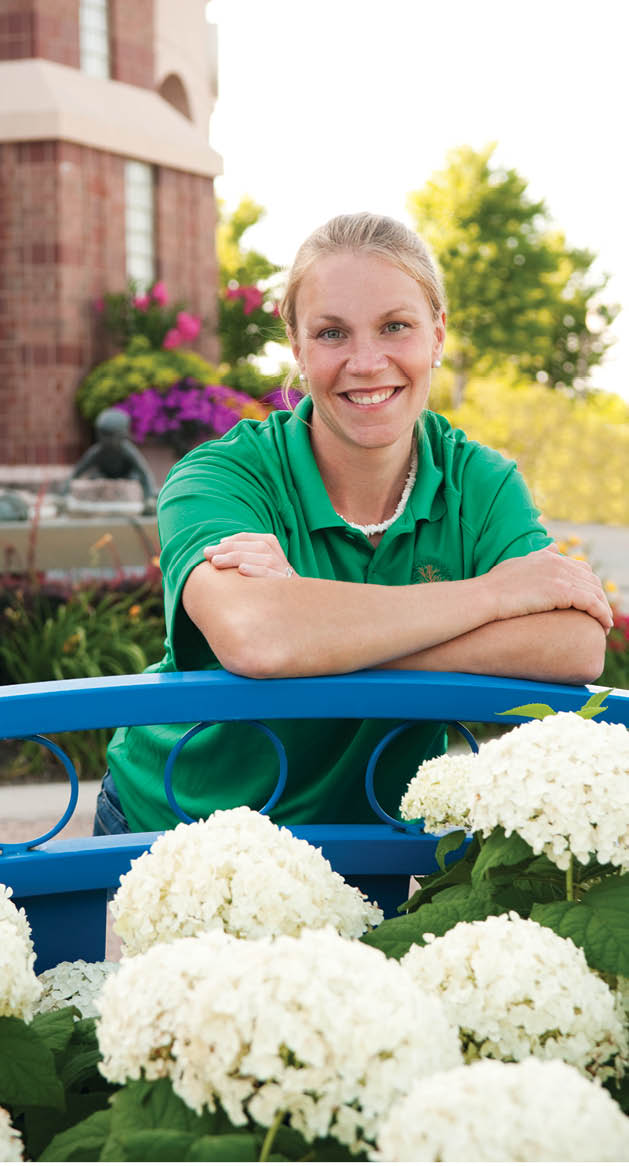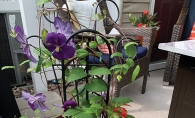Cathy Nickelson and Johannes (Yo) Louwers don’t use paint, brushes and canvas. But they are artists who create beautiful—albeit impermanent—works of art.
Each spring and summer at the Tamarack Village, Woodbury Village and Woodbury Lakes retail complexes, Nickelson, nursery manager for Horticulture Services and Louwers, branch manager for Brickman Group (and their horticulture crews) are responsible for planting and maintaining eye-catching, colorful flower displays. The annual flower varieties planted at the three shopping havens include begonias, petunias, impatiens, hibiscus, marigold, salvia and vinca, along with ornamental grasses.
Tamarack Village and Woodbury Village
Nickelson oversees the planting of about 70 separate flower beds at Tamarack Village and 60 beds at Woodbury Village. It takes a three-person crew three days to install annuals at Woodbury Village and a three-person crew five days to install annuals at Tamarack Village. Flowers are provided by Gerten’s Greenhouse in Inver Grove Heights.
Typically, planting doesn’t begin until May 12 “give or take,” Nickelson says. This year it will be the 13th, “unless we still have lows down to 30-34 degrees; then we will push the date back.”

Why use annuals that have to be planted every spring, rather than perennials? Annuals generally retain their petals (and colors) longer, usually from May through September, while many perennials have a bloom period of only about two months. And, “annuals almost always have more flowers per square inch,” Nickelson says. Over time, the growers who use plant genetics to improve varieties’ hardiness, color, and other traits produce improved varieties. “For example, some older varieties of impatiens faded out if the weather got too hot by August. But some of that has been bred out of the plant,” she says.
In picking varieties, the talented horticulturists are guided by several factors. Nickelson says, “Whether they’re in sunny or shady spots, and soil types—whether the soil is fairly heavy and ‘clay-ey’.” Another consideration is whether a particular site is equipped with irrigation systems. Most annuals require irrigation all summer although some, like vinca, work well without irrigation. “Potato vine is also pretty drought-tolerant,” she says.
By nature, shopping complexes present a challenge to growers; most of the topsoil has been removed during construction, Nickelson says, leaving behind plenty of rocks and clay. So the horticulture experts add soil amendments: various combinations of peat, bark, perlite and, sometimes, compost, to provide better growing media.
Woodbury Lakes
At Woodbury Lakes, Louwers, who works for Brickman Group, a commercial landscape management company, oversees an 18-member crew who works for about a day and a half installing more than 90 flower pots, and 66 20-inch hanging baskets (hung on light poles). Planting is typically done just before the Memorial Day weekend.
Planning begins in February when Louwers sits down with Woodbury Lakes’ representatives to help them select the right mix of flowers, plants and ornamental grasses, using catalogs displaying the inventory of Michigan-based Wenke Greenhouses. The flower varieties used at Woodbury Lakes include petunias, begonias, two varieties of coleus, rudbeckia and salvia, along with hearty ornamental grasses well-suited for Minnesota’s extreme climate. The site has five flower beds, each roughly 25 feet by 6 feet, plus smaller “fingertip” flower beds planted along the sidewalks.

The flower varieties chosen tend to be low-maintenance annuals with good weather tolerance. A single flower type can provide a number of different colors, depending on the variety. For example, coleus is available in orange, red, yellow, green, purple, pink, cream or many combinations of colors.
Along with a varied pallet of colors, Louwers chooses flowers of varying heights and textures for maximum visual effect. Every year he picks a different color “theme.” Last year’s displays featured bold, dark blues and purples. Pink hues were the predominant theme the year before that. This year’s flower beds will feature “very bold, contrasting colors,” including shades of purple, yellow, red and white.
Since taking over landscape maintenance at Woodbury Lakes three years ago, Brickman’s crew has been making changes in the landscape to make it more sustainable by planting more perennial grasses that don’t have to be replaced annually, Louwers says. When Brickman took over the site, crews removed the topsoil from the flower beds and installed soil with two to four inches of compost and peat, which they now do every spring to help the soil hold moisture. Annual planting also involves tilling about 6 inches deep to loosen the soil and help flowers and grasses take root.
Care and Maintenance
During the growing season, employees from Horticulture Services and Brickman handle daily watering and maintenance at their respective locations. “If the ground beds are looking dry, two people are out there watering and pinching (removing dead plant-parts) to keep everything looking as good as possible,” Louwers says.
Plants also receive a weekly dose of liquid fertilizer to help them stay strong in the face of 90-degree heat and dry spells. Louwers estimates that maintenance at Woodbury Lakes averages about 60 to 70 person-hours per week.
Hopefully, the results of all this work are appreciated by the end-beneficiaries: the shoppers and storekeepers at the three shopping complexes. For Robert Muir Co., owner of Woodbury Village and Tamarack Village, the flowers represent an essential part of the marketing strategy for both shopping areas, according to property manager Laura McGraw. “It’s a highly competitive market out there, and we want our properties to look inviting,” she says. “The eye-catching flowers are a tradition at both Tamarack and Woodbury Village, which opened in 1996 and 1991, respectively. Our tenants and customers know our properties have always looked great. We were one of the first shopping centers in the metro area to plant roses in our common areas; we’ve also been known for having our blooming flowers planted before anyone else.”
Of course, the merchants who own shops at the three shopping complexes greatly appreciate the flowers and what they add to the surroundings. “They give store owners a better sense of pride, which makes us want to keep up the appearances of our storefronts,” says Patty Delander, owner of Pack & Mail at Woodbury Village. “They not only add significantly to the ‘curb appeal,’ but give shoppers a sense of friendliness and a feeling of being welcomed.”









